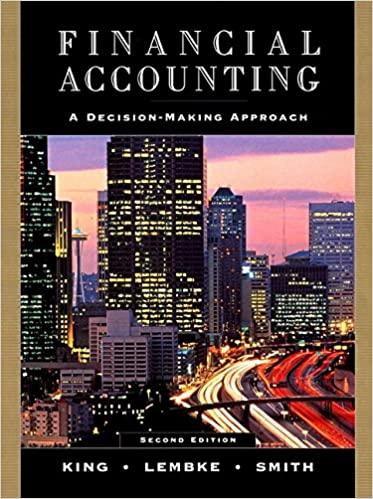Multiple Choice: Analyzing the Balance Sheet Select the correct answer for each of the following: 1. Which
Question:
Multiple Choice: Analyzing the Balance Sheet Select the correct answer for each of the following:
1. Which of the following will lead to an increase in working capital?
1. Receipt of payment on accounts receivable.
b. Payment of accounts payable.
c. Issuance of stock for cash.
d. Purchase of land for cash.
2. Which of the following would Gettings Company consider to be a cash equivalent?
a. Land with an established cash value equal to its carrying value.
b. A one-month CD at Crawdad Savings and Loan.
c. A thirty-day note payable to Cummings Corporation.
d. Prepaid insurance.
3, Care must be taken in analyzing balance sheet information because:
a. Many assets are reported at historical cost, which does not necessarily reflect the prices at which they could be sold.
b. Equity balances are stated at historical cost and assets are stated at market value.
c. Liabilities are stated at historical cost and equity balances are stated at market value.
d. None of the above.
4. Total assets reported on the balance sheet at year-end:
a. Include intangible assets that have been purchased.
b. Include property, plant, and equipment net of accumulated depreciation.
c. Include both a and b.
d. Include neither a nor b.
5. Generally the balance sheet and related notes disclose information about liabilities and claims on company assets.
A secured debt might be labeled:
a. Subordinated debenture bonds.
b. Accounts payable.
c. Equipment trust certificates.
d. Any of the above.
6. Each of the following is considered a part of contributed capital except:
a. Par value of preferred stock.
b. Additional paid-in capital.
c. Retained earnings.
d. Par value of common stock.
Step by Step Answer:

Financial Accounting A Decision Making Approach
ISBN: 9780471328230
2nd Edition
Authors: Thomas E. King, Valdean C. Lembke, John H. Smith





